KSP-Cadherin (PT1722) mouse mAb
- Catalog Number : A130233
- Number :
-
Size:
Qty : - Price : Inquiry
Introduction
Specificity:
This antibody detects endogenous levels of human KSP-Cadherin. Heat-induced epitope retrieval (HIER) TRIS-EDTA of pH8.0 was highly recommended as antigen repair method in paraffin section.
Background:
cadherin 16(CDH16) Homo sapiens This gene is a member of the cadherin superfamily, genes encoding calcium-dependent, membrane-associated glycoproteins. Mapped to a previously identified cluster of cadherin genes on chromosome 16q22.1, the gene localizes with superfamily members CDH1, CDH3, CDH5, CDH8 and CDH11. The protein consists of an extracellular domain containing 6 cadherin domains, a transmembrane region and a truncated cytoplasmic domain but lacks the prosequence and tripeptide HAV adhesion recognition sequence typical of most classical cadherins. Expression is exclusively in kidney, where the protein functions as the principal mediator of homotypic cellular recognition, playing a role in the morphogenic direction of tissue development. Alternatively spliced transcript variants encoding distinct isoforms have been identified.
Function:
Function: Cadherins are calcium dependent cell adhesion proteins. They preferentially interact with themselves in a homophilic manner in connecting cells; cadherins may thus contribute to the sorting of heterogeneous cell types.,
Similarity: Contains 6 cadherin domains.,
Tissue specificity: Kidney specific.,
This antibody detects endogenous levels of human KSP-Cadherin. Heat-induced epitope retrieval (HIER) TRIS-EDTA of pH8.0 was highly recommended as antigen repair method in paraffin section.
Background:
cadherin 16(CDH16) Homo sapiens This gene is a member of the cadherin superfamily, genes encoding calcium-dependent, membrane-associated glycoproteins. Mapped to a previously identified cluster of cadherin genes on chromosome 16q22.1, the gene localizes with superfamily members CDH1, CDH3, CDH5, CDH8 and CDH11. The protein consists of an extracellular domain containing 6 cadherin domains, a transmembrane region and a truncated cytoplasmic domain but lacks the prosequence and tripeptide HAV adhesion recognition sequence typical of most classical cadherins. Expression is exclusively in kidney, where the protein functions as the principal mediator of homotypic cellular recognition, playing a role in the morphogenic direction of tissue development. Alternatively spliced transcript variants encoding distinct isoforms have been identified.
Function:
Function: Cadherins are calcium dependent cell adhesion proteins. They preferentially interact with themselves in a homophilic manner in connecting cells; cadherins may thus contribute to the sorting of heterogeneous cell types.,
Similarity: Contains 6 cadherin domains.,
Tissue specificity: Kidney specific.,
General Information
| Reactivity | Human |
|---|---|
| Application | IHC |
| Host | Mouse |
| Clonality | Monoclonal |
| Conjugate | Non-conjugated |
| Uniprot | O75309 |
| Isotype | IgG2a, Kappa |
| Immunogen | Synthesized peptide derived from human KSP-Cadherin |
| Assay principle | IHC-p 1:100-500 |
| Sample type | paraffin section |
| Purity | The antibody was affinity-purified from mouse ascites by affinity-chromatography using specific immunogen. |
| Expression region | Kindey, renal carcinoma |
| Storage buffer | Liquid in PBS containing 50% glycerol, 0.5% BSA and 0.02% sodium azide. |
| Storage instruction | -20°C/1 year |
| Research topic | cell adhesion, homophilic cell adhesion, cell-cell adhesion, biological adhesion, |
| Alias | CDH16 UNQ695/PRO1340 |
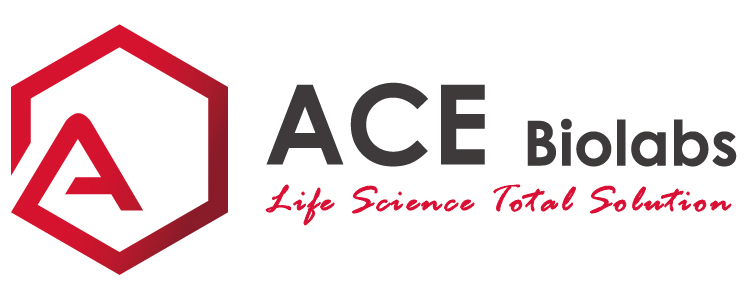
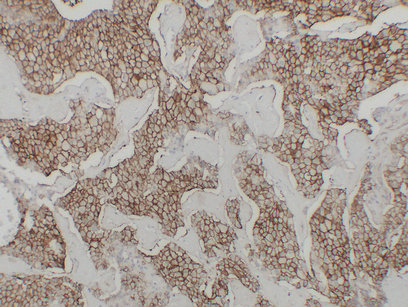
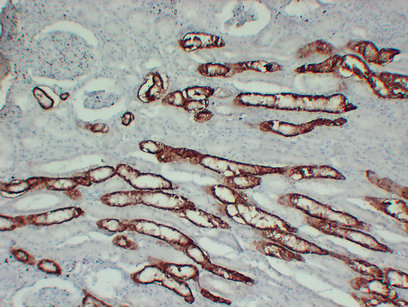
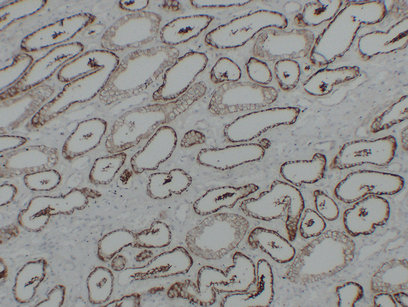
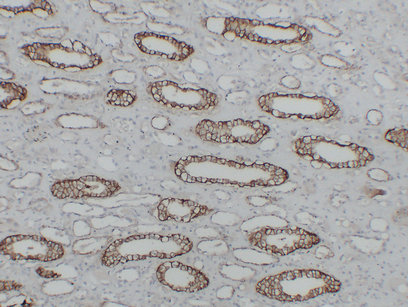
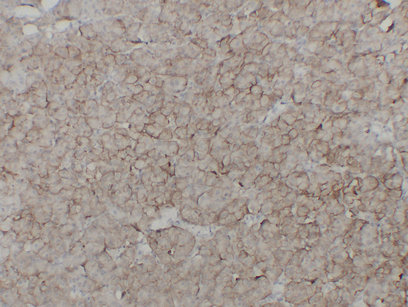






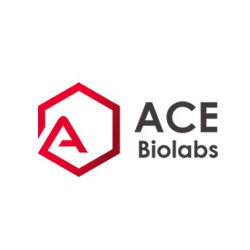


.png)